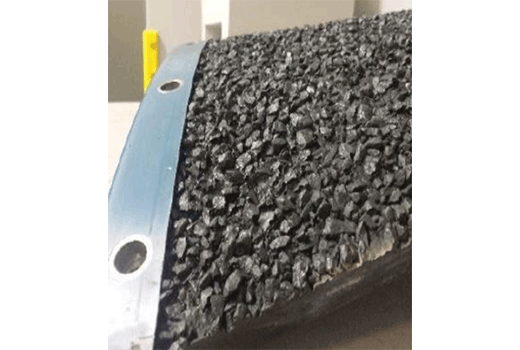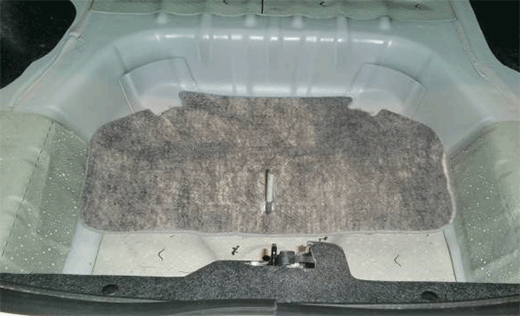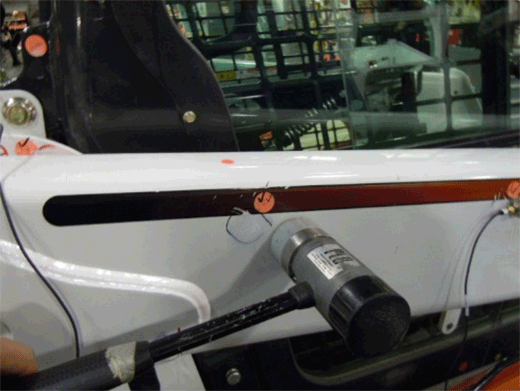
Standardized test customization
Development of test procedures, and evaluation and optimization of customer procedures. Testing to customer and industry standards to ensure compliance.
Standardization of internal testing procedures is helpful in that it ensures that results are comparable over time and help ensure that lab resources are used optimally. To increase test efficiency, commercial-off-the-shelf (COTS) systems can be customized to support standardized sound and vibration testing. Standardized testing also helps when outsourcing testing, as the standardization ensures compliance.
We have worked with a number of customers on projects such as development of test procedures and evaluation and optimization of procedures. We have also performed testing to customer standards in many industries, including automotive and heating, ventilation and air-conditioning (HVAC).
Here are some projects we have worked on with customers to help them ensure efficient test procedures:
As motor vehicles become quieter, some noises typically masked by an otherwise loud vehicle are now cause for new noise control applications. One such noise is fuel as it sloshes around inside the tank. A company that performs a variety of testing for auto parts manufacturers approached us to acquire and analyse fuel slosh noise. Acoustic and vibration data was acquired on a fuel tank while on a fuel slosh test sled. The data was analysed and compiled for the customer enabling them to maximize efficiency by focusing on test stand operation, and then propose improvements in the tank design to decrease the fuel slosh noise.
To support a vehicle development project, we were asked to collect structure-borne data for an automotive OEM to use in a source path contribution (SPC) analysis. The SPC analysis helps provide an overall image of the vehicle sensitivities and characterization in terms of noise and vibration. Vibrational acceleration per input force (A/F) frequency response functions were measured using a modally tuned impact hammer. The data we delivered to the customer was used in their SPC analysis to quantify the structure-borne paths from key vehicle acoustic and vibration sources to driver response locations.
An automotive OEM needed help in identifying potential cost reductions in relation to the interior treatments of vehicles for road noise. Operational noise measurements were conducted both on-road and on a chassis dynamometer with rough shells in a hemi-anechoic chamber.

Objective 1/3-octave data and sound quality metrics were calculated for all cost-reduced interior package iterations to ensure road noise performance did not degrade. An optimized configuration was identified that maintained the vehicle’s NVH performance while saving US$1 million/year and 7 pounds of weight per vehicle.
Electric vehicles produce significantly less exterior noise than vehicles with internal combustion engines, which makes detectability of the vehicle more difficult for pedestrians, bicyclists, etc. The SAE J2889-1 draft standard provides a method of quantifying minimum exterior noise levels for electric vehicles. Using the SAE minimum noise test as a basis, a non-US transportation agency requested measurements on multiple electric vehicles. These acoustic measurements were made on an NVH chassis dynamometer in accordance with the SAE draft standard. The data was used to support the certification of these vehicles to meet standards held by the ransportation agency in terms of minimum exterior noise levels.
In addition, the agency wanted our help in acquiring pass-by test data from a number of indoor facilities to compare to data from outdoor facilities, to evaluate whether the draft standard can include an indoor measurement technique to minimize the influence of weather and site conditions.
A global air conditioning, heating, and refrigeration systems manufacturer chose to outsource the measurement of sound power for qualification of their air handling units (AHU) for delivery to the final customer. Sound power measurements were made on the AHU at the customer’s facility in Canada, where they do not have a reverberation chamber. The sound intensity-based ISO 9614-2 specification was used for all measurements to quantify the sound power. We developed a process derived from standard procedures for measurements of noise from vehicle exhausts and intake orifices. This new process was applied to handle the challenge associated with making sound intensity measurements in the presence of a direct flow greater than 4 m/s (which is not allowed by the ISO spec). This alternative method for qualifying AHUs for sound power has saved the customer an excessive amount of time and shipping costs associated with measuring the AHU in the company’s reverberation chamber in their facility abroad.
An off-highway farm and construction vehicle manufacturer requested assistance in performing vehicle-level modal analysis. Vibration response data was acquired on the vehicle, using electromagnetic shakers (traditional modal analysis), and vehicle operating conditions (operational modal analysis).
The results were presented to the customer and used to correlate to low-frequency FEA models. An engineer from the vehicle manufacturer was involved in the testing and was trained on methods and analyses used.

Suscríbase a nuestro boletín informativo y recibirá las últimas noticias de B&K sobre sonido y vibración


